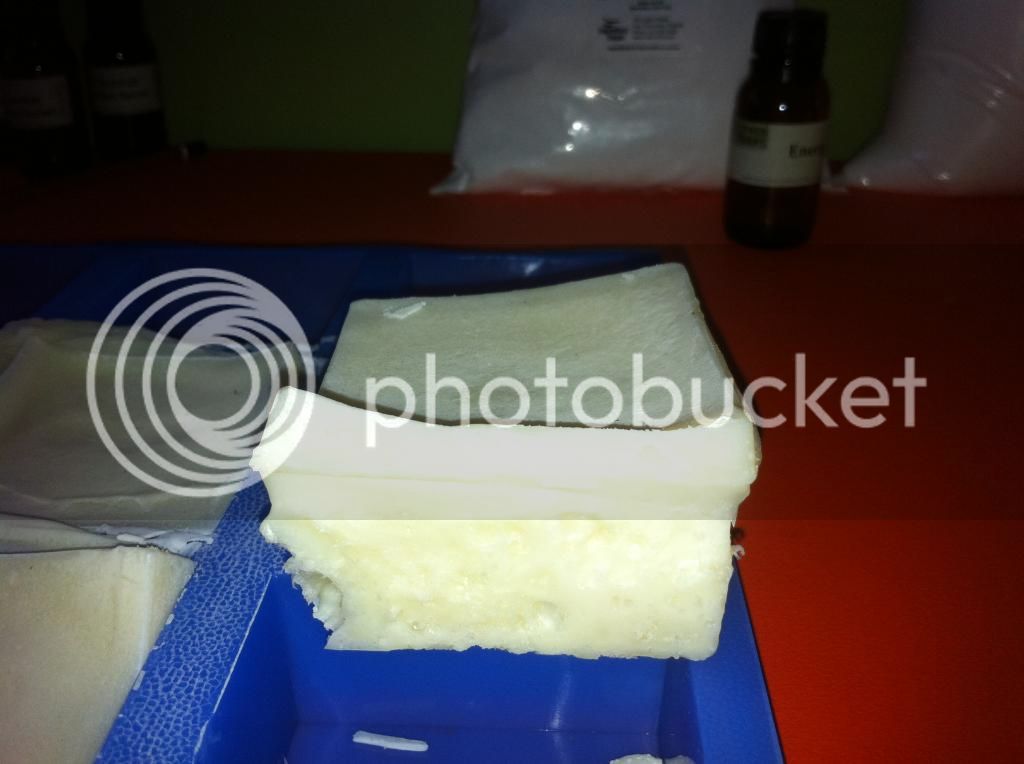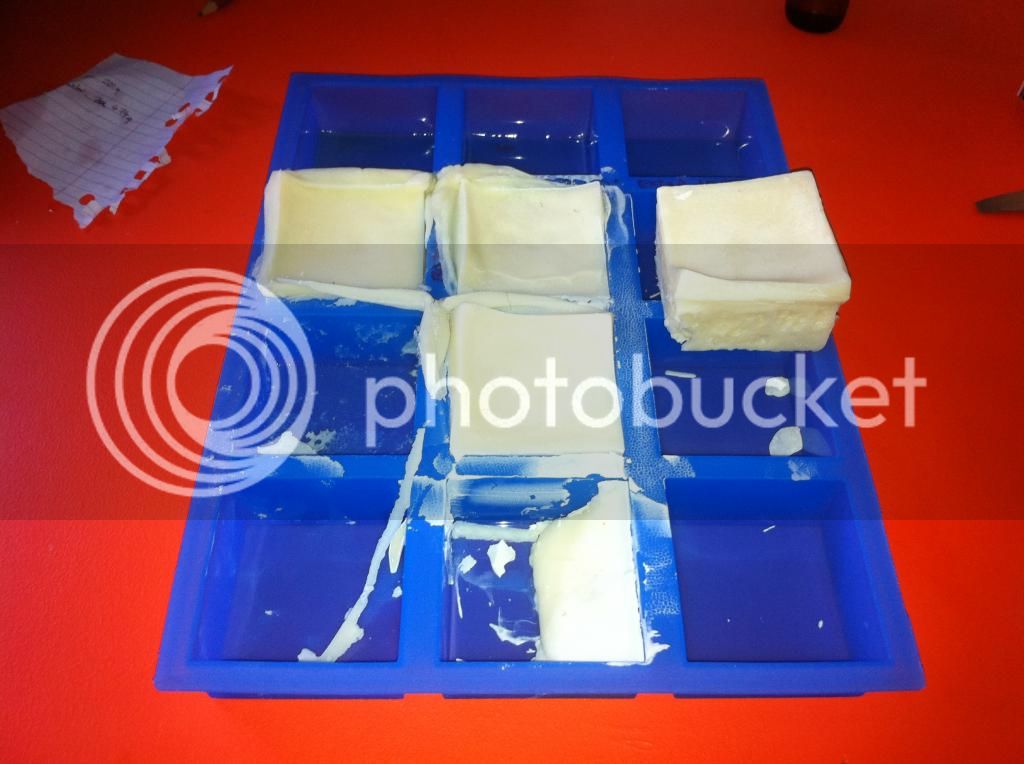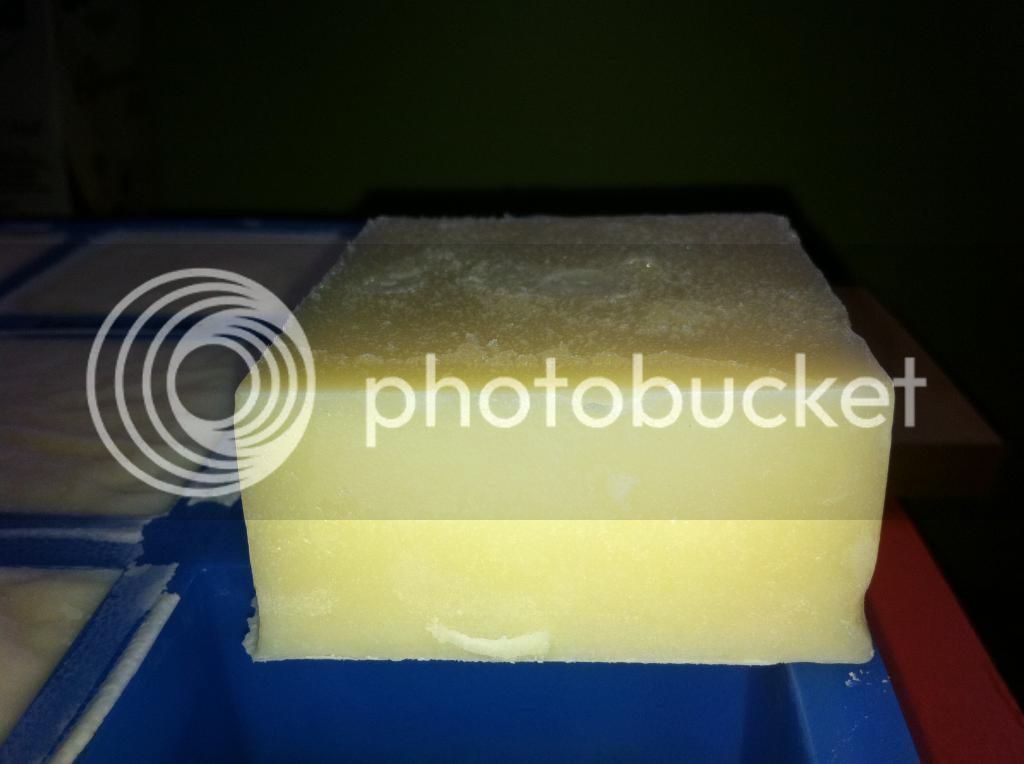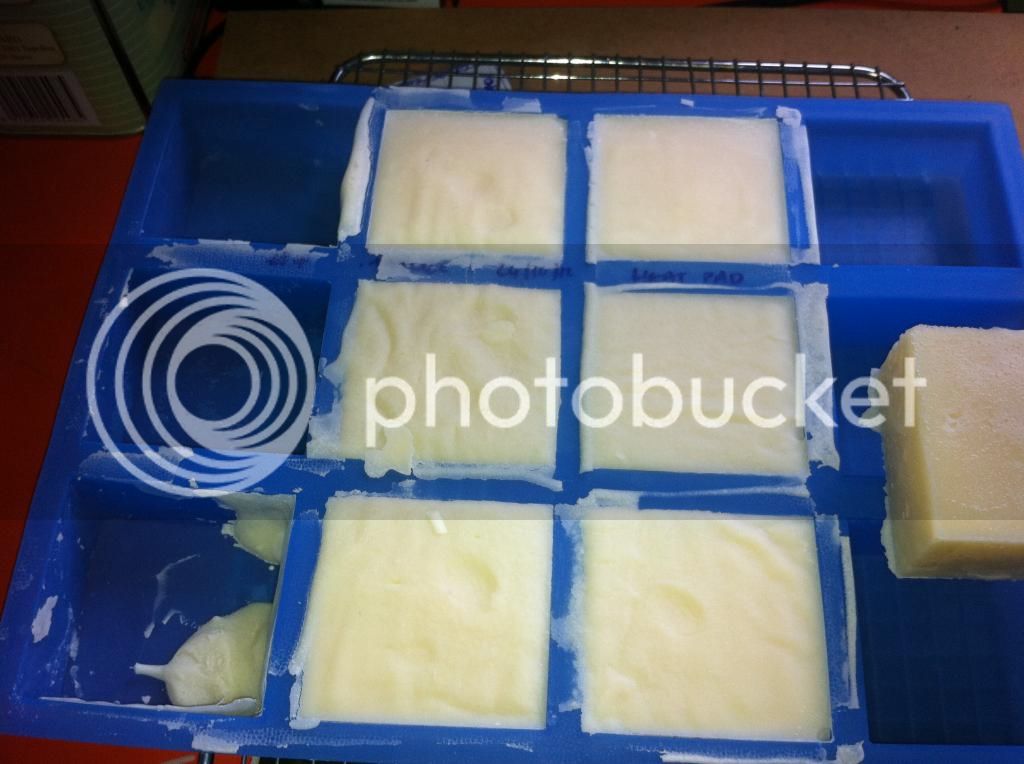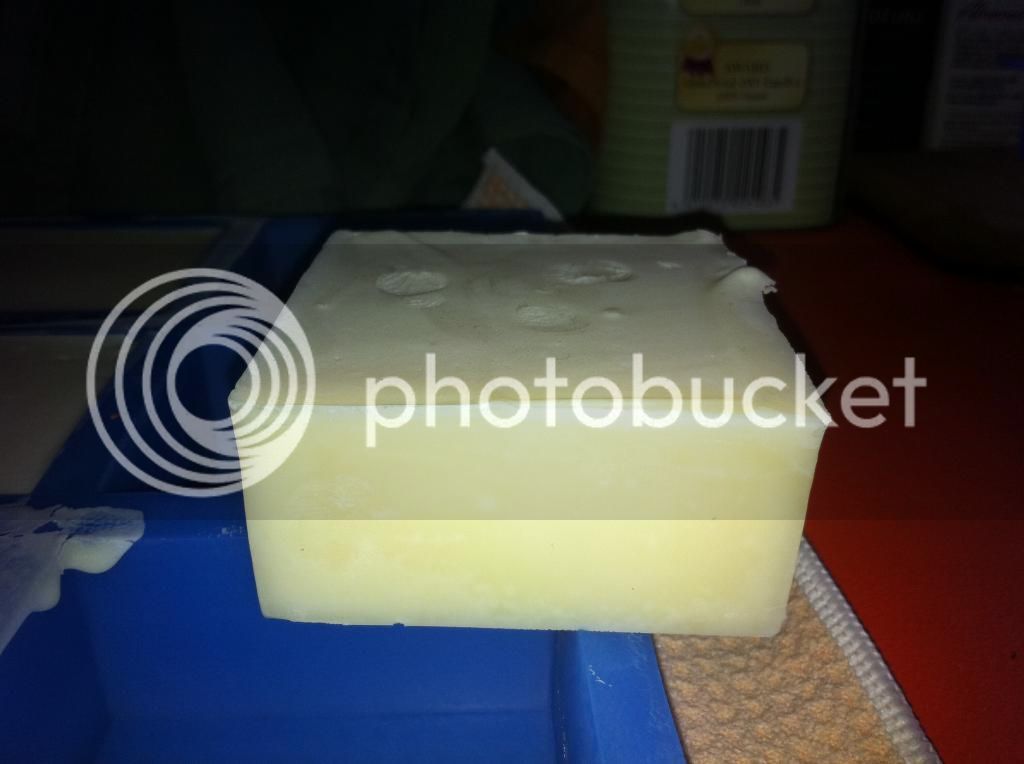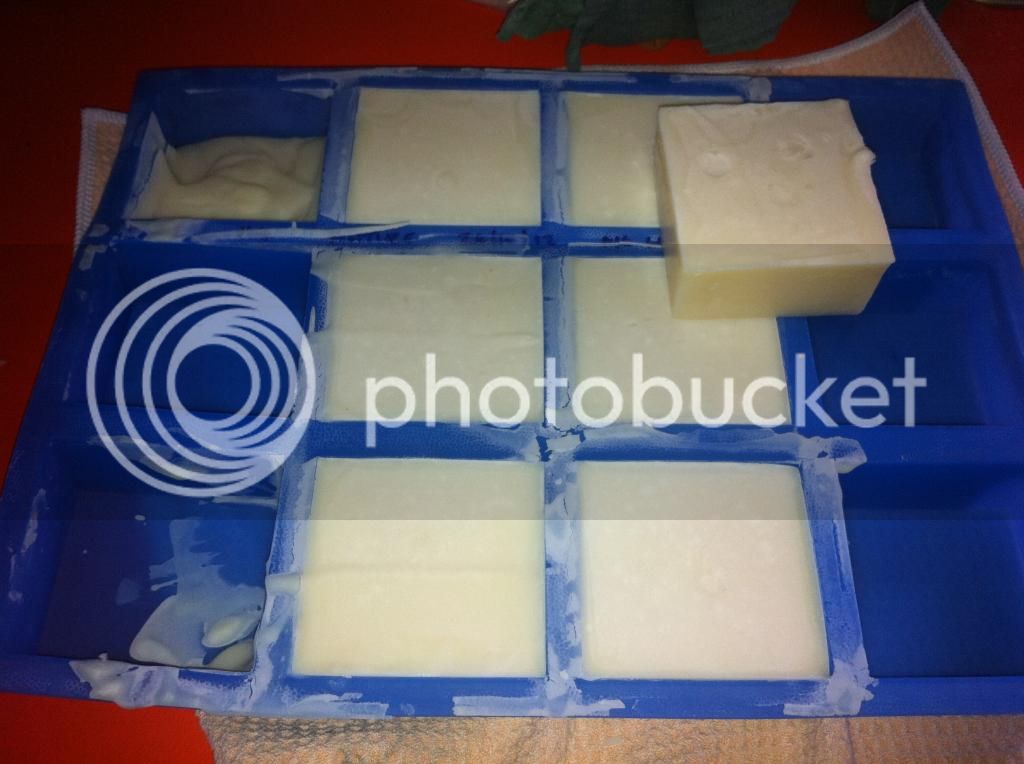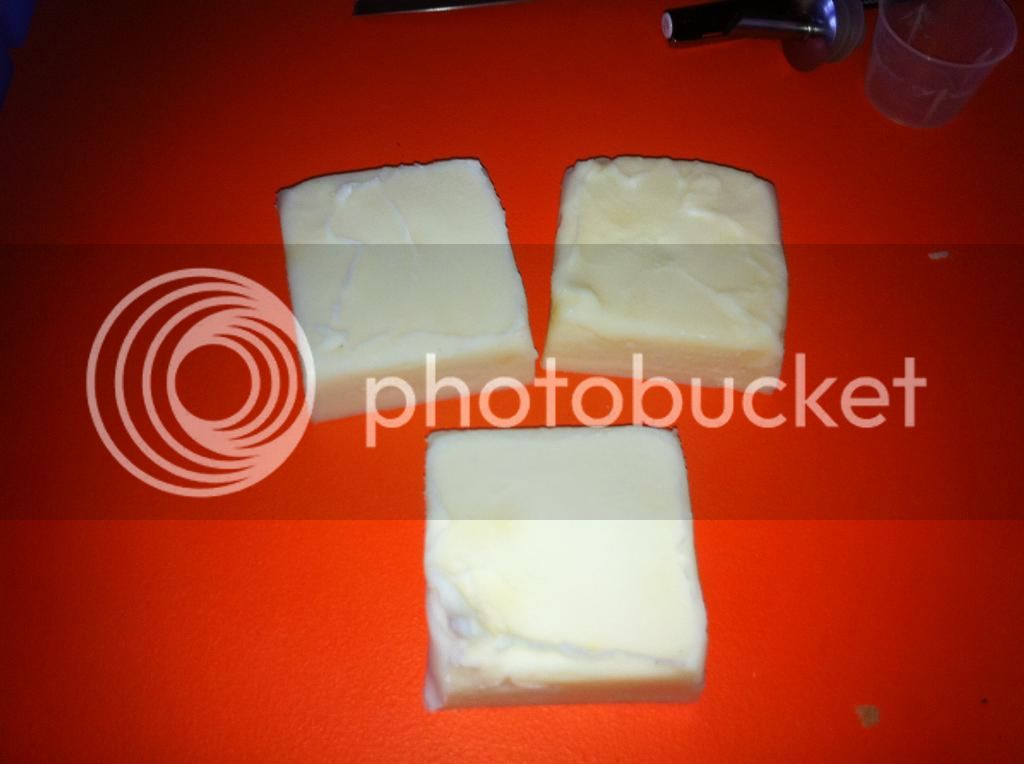Thought I'd revisit this thread as I did a bit of experimenting yesterday.
To return to the topic, this soap was
very soft when I first made it. Even after a couple of weeks in the mould, the individual bars would not demould cleanly; instead, the mixture would cling to the bottom of the mould and was still
very fudgey. The best way I can describe it is it was like a thick ganache or thick frosting. The soaps were hard on top, though. The moulds I am using are a 3 x 4 silicon moulds, each individual mould is about 2.75 inches square and about 1.25 inches deep: this yields a largish bar of about 130 grams.
So I did a bit of reading, and while not finding a specific answer to many questions, I did feel inspired to experiment a bit. (I should say that I have tried another batch between then and now simply fiddling with the quantity of castor oil, as this is not an oil I'd used previously, but it didn't same to make any difference ... )
So, anyway... yesterday ...
The variable I wanted to test was heat. I've haven't paid much attention to heat previously because, (a) a few of the books I have don't seem to pay it much heed and (b) we're in the middle of spring here with avg daytime temps around 26*C and night temps rarely below 18*C. So it's pretty warm. The "shed" we soap in is well insulated (it's mother-in-law's sometime granny flat) and stays pretty cosy.
The thought I was having regarding the softness of this soap is that there is not enough heat for the saponificaction reaction to continue after trace and pour. That is, it's cooling too quickly once in the mould and the reaction is stopping. So I thought:
(1) Make a bigger batch. My test batches are around 500 grams. A bigger batch should help the reaction continue simply through thermal mass. Some of the ingredients are quite pricey, so I didn't want to make too big a batch, so I decided on around 1.5 kg (about 3.3 pounds).
(2) Use a bigger loaf-style mould. More mass in-mould should retain more heat and help the reaction continue. I chose a 1-litre milk carton, which is about 3 inches square and about 8 inches high.
(3) Use a heat source to keep the mix warm in-mould for a while after the pour. I still wanted to use our silicon tray moulds, so I put a mould tray on a flat heat pad I have for brewing beer which, at least as far as beer is concerned, keeps it at about 30*C during fermentation. I poured a separate few bars in another tray mould to stick in the oven at 60* ala
Scientific Soapmaking.
(4) Combine the lye and oils at higher initial temps. Typically I've been letting temps cool to about 35*C before combining ...
So what were the results?
I heated the oils and combined the lye and heated oils when both were around 70*C (158*F).
I haven't timed this, so I am scratching the edges of memory, but I reckon it came to trace quicker than previous, smaller (500 gram) batches.
The
consistency of the soap at pour was somehow different. Can't put my finger on it, but it seemed creamier or something...
I poured roughly 800 ml (about 27 fl oz) into the makeshift milk/loaf mould;
I divided the remainder into two two silicon tray moulds, one destined for the heat pad, one destined for the oven. Each tray ended up with four individual soaps.
I left the tray mould on the heat pad for 4 hours.
I left the other tray mould in the oven for about 30 mins...
Okay, so ...
First, the oven option was a total disaster. Enough said about that.

The soaps-in-silicon on the heat pad seem to have hardened up nicely, and I demoulded a single bar this morning. It can do with some more time in-mould (patience isn't one of my many, many virtues

), but so far this is very promising.
The soap in the milk/loaf mould I will need to leave longer to cure, though it seems hardish to the touch.
One thing I noticed during the initial in-mould stage is that both the soap on the heat pad and the soap in the milk/loaf mould went through an initial hardening off stage, then softened up again so that they yielded to finger pressure on top, and they appeared noticeably translucent in the centre.
I've only been soaping for six months or so, so I don't have a whole lot of experience and results under my belt, but this translucent stage is not something I've seen in any of my other soaps. Which raises the question: Is this a stage that
should be showing with my other soaps?
Anyone like to comment on my method or results? Interested to know if any of this rings true with more experienced or experimental soapers.





